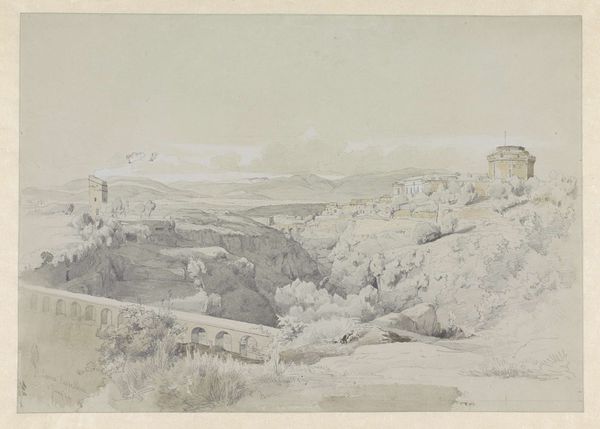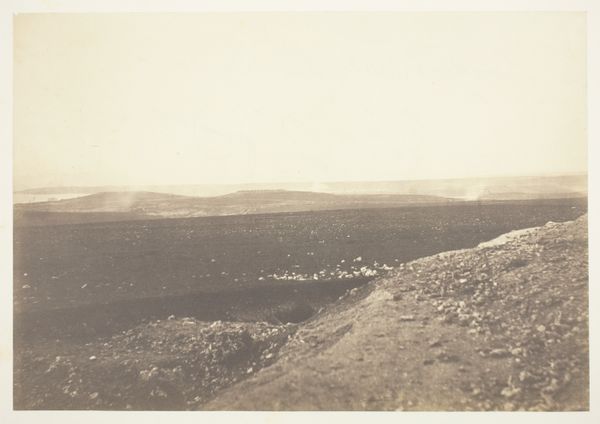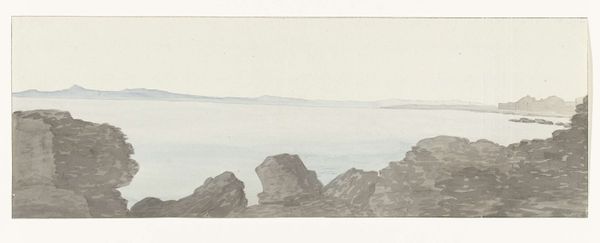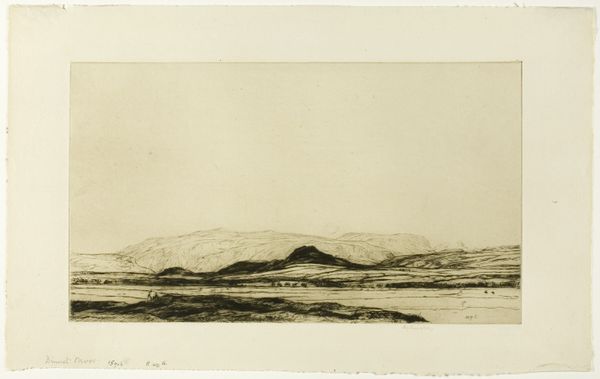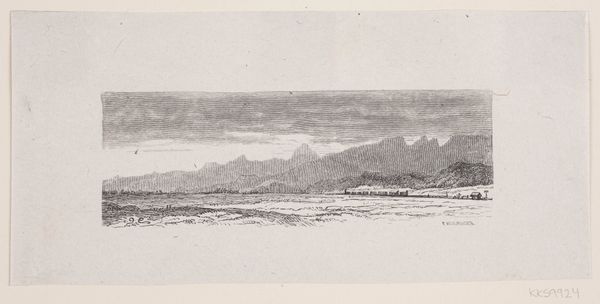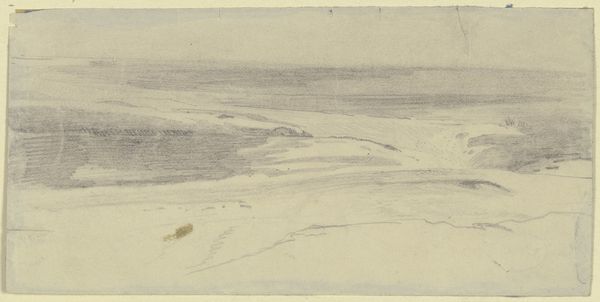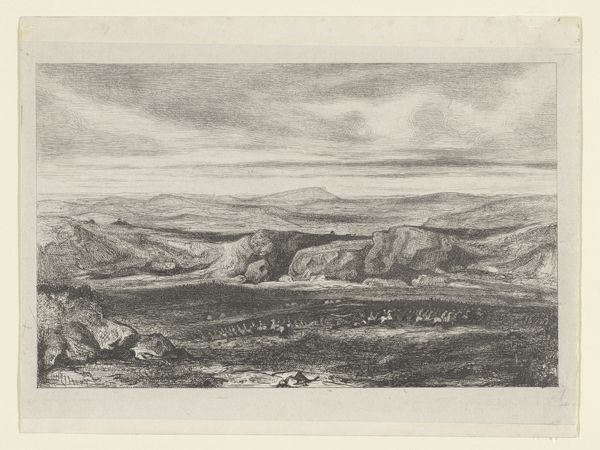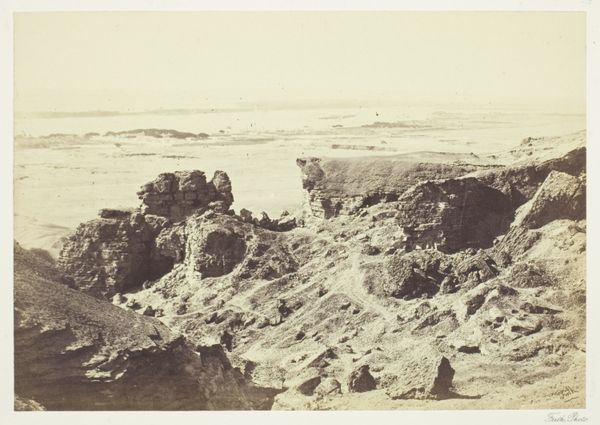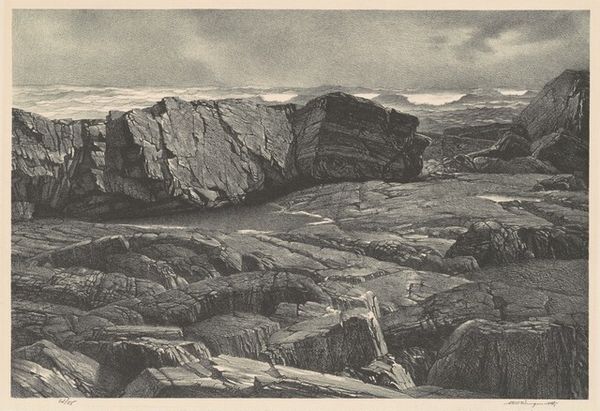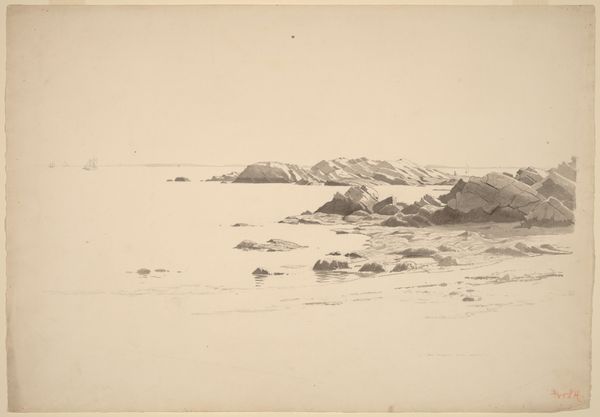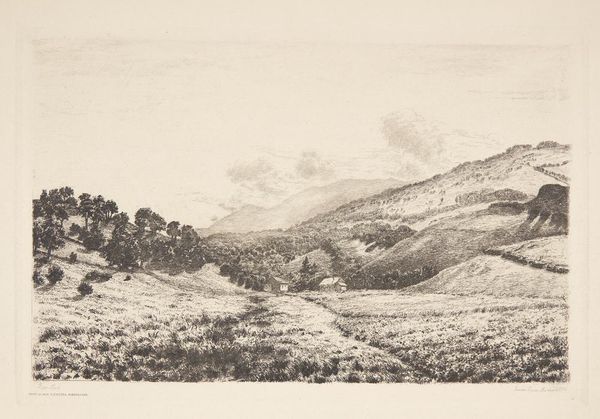
drawing, pencil
#
pencil drawn
#
drawing
#
pencil sketch
#
landscape
#
pencil drawing
#
romanticism
#
pencil
#
realism
Dimensions: height 368 mm, width 506 mm
Copyright: Rijks Museum: Open Domain
Curator: Josephus Augustus Knip rendered this landscape, "View of Ariccia from Genzano," with pencil somewhere around 1810 to 1812. Editor: My first impression is one of calm. There's a subtle harmony between the detailed foreground rock and the vast, hazy view. The scale is quite intriguing; the immense landscape reduced to pencil strokes. Curator: The materials used here--graphite on paper--are quite telling. Knip's choice emphasizes accessibility and portability, aligning with a burgeoning trend of artists directly engaging with their environment and documenting it with humble means. Editor: It feels very grounded in observation, like a visual record. The meticulous rendering of those foreground rocks hints at an underlying symbolism, almost like enduring witness or ancient guardians presiding over the passing of time within this valley. Do you feel this is the artist's personal reflection of Romanticism's appreciation for nature's power and sublime grandeur? Curator: Undoubtedly, you're pointing to the core social contexts. Artists from this period were very aware of nature as something distinct from but entwined with industrial output. It might suggest this view had meaning outside art circles. This landscape and others would appeal to city-dwellers who didn’t know agriculture. I wouldn’t want to call the depiction industrial, of course, even if Romanticism was shaped by a tension in artistic circles between industry and retreat into the countryside. Editor: I agree that a broader awareness of symbolic associations provides much depth, here. The view from Genzano probably held strong geographical meaning, maybe pointing to that period’s culture for country life or pilgrimage. Curator: Ultimately, analyzing Knip's material choices, we gain insight into 19th-century artistic values concerning accessibility. He uses that tension and translates it into aesthetic ones. Editor: Precisely. Looking at Knip's composition reveals Romantic ideals through its specific arrangement of symbols. It provides access to understanding more than meets the eye.
Comments
rijksmuseum about 2 years ago
⋮
Knip drew the town of Ariccia and environs as seen from Genzano on two sheets of paper. Ariccia is dominated by the dome of the church of Santa Maria dell’Annunziata, designed by Bernini. At the right is the Santuario di Santa Maria di Galloro, where a miraculous image of the Virgin Mary, painted on a piece of rock, has been venerated since 1623. In the foreground Knip twice drew a detail of an old paved road, probably the Appian Way.
Join the conversation
Join millions of artists and users on Artera today and experience the ultimate creative platform.


